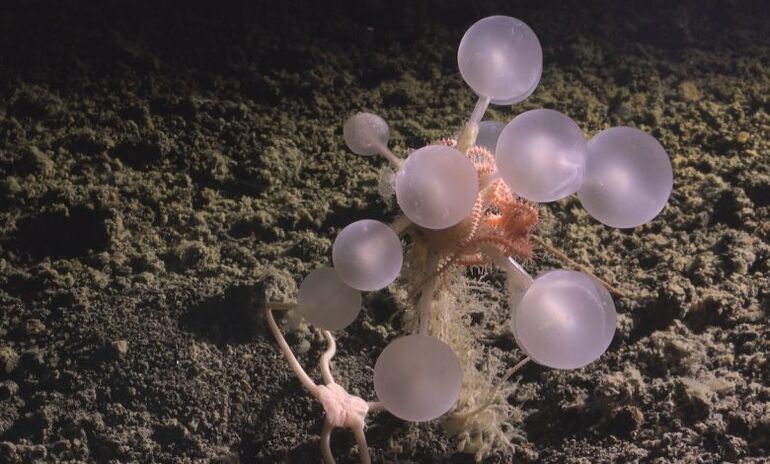ageone
Evolution of Pyoderma Gangrenosum ( 2 фото )

A 32-year-old man presented to the rheumatology clinic with a 4-month history of recurrent abscesses and a 3-day history of a skin lesion on his face. The abscesses had developed in his kidney, spleen, liver, lung, and skin. During previous evaluations of the abscesses, cultures had been negative, and antimicrobial therapy had been ineffective. Tests for rheumatologic conditions and immunodeficiency had been negative. At the current presentation, the physical examination was notable for a skin ulcer with a violaceous border on the right lower portion of the face that had started as an umbilicated, tender papule (Panels A, B, and C are photographs from days 1, 2, and 3, respectively, taken by the patient; Panel D is a photograph from day 4, taken during the current presentation). The next day, the ulcer had enlarged (Panel E, day 5). Histopathological analysis of a skin-biopsy specimen obtained from the border of the lesion showed a diffuse neutrophilic infiltrate with no organisms. A colonoscopy showed no evidence of inflammatory bowel disease. A diagnosis of pyoderma gangrenosum associated with aseptic abscess syndrome — an autoinflammatory disorder — was made. Treatment with colchicine and a tapering course of an oral glucocorticoid was initiated. The skin lesion started to subside 1 day after the start of treatment (Panel F, day 6; Panel G, day 8; and Panel H, day 14). At the 3-month follow-up, the ulceration (Panel I) and abscesses had abated.
Authors: Hanlin Yin, M.D. https://orcid.org/0000-0003-0706-3998, and Liangjing Lu, M.D., Ph.D.
Published April 6, 2024
N Engl J Med 2024;390: e36
DOI: 10.1056/NEJMicm2311165
VOL. 390 NO. 14

Крепкого здоровья!
Взято: Тут
1144















